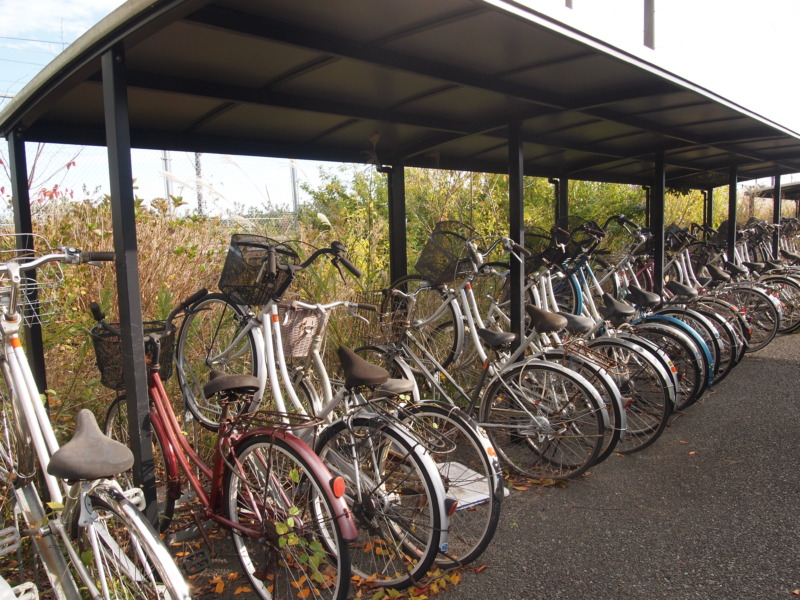(前回の記事から続く)
[toggle]Prepared for PandemicCOVID-19 has brought about challenges for the recovery effort in Japan, including drawing government and media attention away from any tsunami recovery efforts in the northeast. But the church has been able to use wisdom gained after the disaster to offer help during this new crisis.
Support methods such as pastor networks and crisis management plans that were created in relief efforts have been reactivated nationwide this year to support those in need. Establishing networks and building local community trust were necessary in addressing both the 2011 disaster and the 2021 pandemic.
“Networks we had set up in 2011 allowed us to share ideas and wisdom in the midst of the pandemic, and since we had built trust with the community and local government after the tsunami, people sought help from churches during the pandemic,” said Yukimasa Otomo, pastor of Shiogama Bible Baptist church in a small fishing town between the large cities of Sendai and Matsushima. For example, his church provides food for those who have lost their jobs or working hours amid public health measures.
“All Japanese were impacted in some way by the disasters in 2011. For some, it may be just a superficial change, but for others, including pastors and churches, it has caused deep and significant changes,” said Hari. “I pray that the pandemic causes similar deep changes in us—including myself.”
“Japanese Christians are once again re-examining what it is to be a disciple of Jesus Christ because of the pandemic,” said Takazawa. “The church has moved out of the ‘come in’ mindset to be more missional.”
The increased sensitivity to outsiders and commitment to holistic care prompted several churches to reach out to internationals who came to Ishinomaki for fishing jobs and were stranded with limited options or made to work harder to make up for factories losing workers because of COVID-19. [/toggle]
パンデミックへの備え
新型コロナ・ウイルスへの対応に政府やメディアの注目が集中したことなどで、日本の復興支援は更なる困難を強いられた。しかし教会は、過去の震災によって得た知恵を今回の危機にも活用することが出来ている。
牧師ネットワークや危機マネージメントなど、震災復興のなかで学んだ支援のやり方がこの1年、日本各地で生かされ、必要な人に支援を届けるのに役立てられた。
支援ネットワークの構築や地域社会から信頼を得るためのプロセスは、2011年の震災、2021年のパンデミックのどちらにも必要となったものだ。
「わたしたちが2011年に構築した支援ネットワークは、パンデミックの中でもアイデアや知恵を共有する役立てられています。地域の人々がパンデミックの中で教会に助けを求めたのも、私たちが津波のあと築き上げてきた地域住民や自治体との信頼関係があってこそです」と大友幸証牧師は語る。
彼は仙台と松島という都市に挟まれた小さな漁村にある塩釜聖書バプテスト教会の牧師だ。彼の教会でも、コロナ対策で職を減らされたり失ったりした人々に食糧を提供している。
「すべての日本人は2011年の災害の影響を何らかの形で受けています。それは一部の人にとっては表面的なものかもしれませんが、牧師や教会を含む他の人にとっては、それは深く重大な変化を引き起こしました」
「このパンデミックが私自身を含め、人々に同じ様な深い変化を促すものとなることを祈っています」と播は言う。
「日本のクリスチャンは、パンデミックのためにイエス・キリストの弟子であることが何であるかを再考させられています」
「教会は『(人々を)自分たちの側に呼ぶ』という思考から抜け出し、宣教に『出かける』思考へと変えられています」と高澤は語った。
外部の人に対する感受性が高まり、よりホリスティックな(思考だけではなく肉体や霊性の健全さを含めた)ケアに取り組む中で、漁業のために石巻に来たものの職が少なく困った人や、コロナによる欠員の穴埋めのために厳しい労働環境に置かれた外国人労働者に手を差し伸べる教会も出てきているという。
[toggle]Let the Walls Fall DownMany people came into contact with Christians for the first time through their presence after the 2011 disaster. The Japanese church consequently learned to go beyond its walls and to serve people physically and emotionally as well as spiritually.
“They learned that its task is not only to proclaim and persuade, but to communicate the gospel through acts and to meet the social needs in front of them,” said Takazawa.
This holistic approach to the gospel in Japan is an exciting development growing from the seeds of disaster, sources told CT.
“We’re starting to sense a greater awareness of the needs of those ‘on the outside’ who often remain invisible or do not have as much of a voice at the table, like women, those with disabilities, foster and adopted children, and immigrants,” said Sue Takamoto. She and her husband Eric serve with Asian Access on a team in Ishinomaki, one of the worst-hit areas, and have created a community with other international Christian workers from a variety of organizations. They moved into a rural area where there was no local church to try to live out the gospel there, and ended up helping to plant a new church.
At the very least, pastors agree that the massive disaster brought issues to light and challenged the church in Japan.
“Some people realized how out of touch their churches were with their communities, others that they did not have the proper vocabulary to explain the gospel to rural Japanese people with no Christian background,” said Makito Matsuda. Born in Miyagi Prefecture, where more than 10,000 people lost their lives in the 2011 earthquake, the pastor hosted 15,000 volunteers from all over the world at Oasis Chapel Rifu, providing much-needed relief in the tsunami-affected areas around his church.
“Some, like myself, realized that serving in unity with Christians from other parts of the world with different languages and cultures can have a great impact on the community,” said Matsuda. “Prompted by these realizations, we gradually began to change.”
A common opinion among pastors is that the post-disaster networking has caused the Japanese church to be more unified than ever.
“I have seen churches across denominations coming together for training, but it was not until after 2011 that I saw such a unified effort for the sake of the suffering and those in need,” Takamoto said. “While the immediacy has lessened in recent years, I don’t think this desire for unity has dissipated.”
Denominational divides were a huge issue prior to the disaster, and although the walls between churches and communities have been torn down, there is still much work to be done in bridging the gaps.
“Networks are beautiful, but hard to maintain,” said Otomo.
“We need to cultivate a better kingdom mindset and develop appreciation for diversity within the body of Christ for the mission to accelerate,” said Nagai.
Neighborhoods remain lost, scattered, or neglected even 10 years after the tsunami, so current ministry has shifted from immediate relief to building relationships and community. Many leaders have taken to creative, entrepreneurial community-building solutions. [/toggle]
「壁」を取り去る機会
2011年の震災後、クリスチャンと初めて接触する機会を得た人も多くいる。その結果、日本の教会はそこにあった「壁」を乗り越えて、物理的にも精神的にも霊的にも人々に奉仕することを学んだ。
「人々は、宣教とは教えを説得するだけでなく、行動を通して福音を伝え、目の前にある社会的ニーズを満たすことであることを学びました」と高澤は言う。
日本への福音宣教に起こったこのホリスティックなアプローチは、災害から生まれた刺激的な発見だ、とCTに語る人もいた。
「女性たち、障害のある人々、保護あるいは養子とされた子どもたち、移住者などは、これまで目に見えにくくされたり、声を上げることができないでいました。しかしそのような『外側』にいる人々が持つニーズに対する認識が高まっていると私たちは感じ始めています」と高本スー氏は言う。彼女は夫エリックと共に、被害が大きかった石巻地域でアジアン・アクセスの活動に参加し、さまざまな組織と協力して外国人労働者のクリスチャンコミュニティを作った。教会がない地方に引っ越して福音に従って生きようとした彼女たちは、最後には新たに教会を作る手伝いをするに至ったのだ。
牧師たちは、少なくともこの大震災が問題を明らかにし、教会をその課題に向かわせたことには同意している。
「(大震災で)教会が地域社会からどれだけ離れた存在になってしまっているかを理解した人もいれば、地方に住むキリスト教に馴染みのない人に対して(自分たちが)福音を説明する適切な言葉を持ち合わせていないことに気付いた人もいます」と松田牧人(まつだ・まきと)牧師は語る。2011年の東日本大震災で1万人以上が亡くなった宮城県で生まれた彼は、世界中から15,000人のボランティアをオアシスチャペル利府教会に迎え、周辺の津波被災地で求められていた救援活動を行った。
「そして私を含め、言語や文化が異なる世界各地のクリスチャンと協働で奉仕にあたることが、地域社会に大きな影響を与えられることに気づいた人もいます」「その気づきに導かれて、私たちは徐々に変化し始めました」と松田氏は述べている。
牧師の間で共通する意見は、災害後のネットワークが日本の教会をこれまで以上に一致させたということだ。
「私はこれまでにさまざまな宗派の教会がトレーニングのために集まるのを見てきましたが、困窮している人々のためにここまで一致して働くのを見るようになったのは2011年以降のことです」「(事態の)緊急性は低下しているものの、協働への想いが消えたとは思いません」と高本は言う。
震災前、宗派間に存在した溝は大きな問題となっていた。教会と地域の壁は取り壊されたが、宗派間の溝を埋めるにはまだ課題は山積みだ。
「ネットワークは美しいものですが、それを維持するのは難しいことです」と大友氏は言う。
「この働きを加速させるには、王国建設のためのより良い考え方を育み、キリストの体(教会)の中に存在する多様性を喜ぶ精神を育む必要があります」と長井は語った。
(次回の記事に続く)
執筆者はマリサ・フォックスウェル・ドゥットウェイラー
本記事は「クリスチャニティー・トゥデイ」(米国)より翻訳、転載しました。翻訳にあたって、多少の編集をしています。
出典URL:https://www.christianitytoday.com/news/2021/march/japan-christians-triple-disaster-tsunami-fukushima-churches.html
